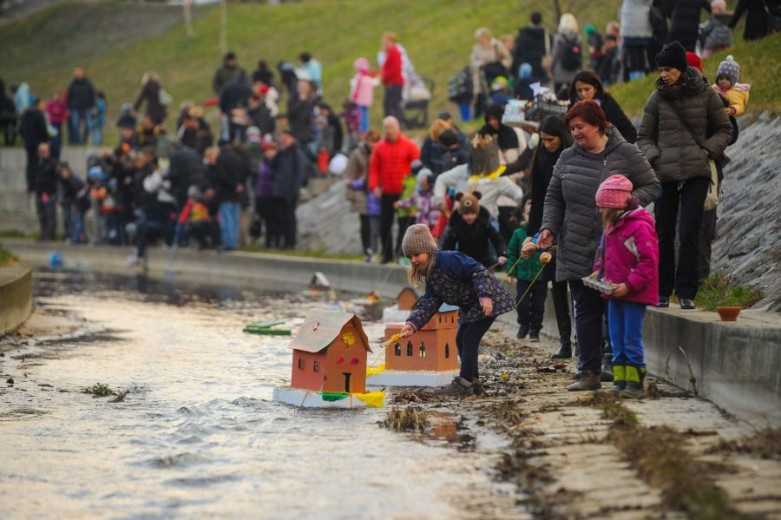St Gregory's Day: when birds get married and spring blooms again
This is also a special holiday for children, who launch gregorčki models – little model houses and other objects with lit candles inside – on Slovenian streams and rivers that day. The light is launched on the water on St Gregory's Day.
In Slovenia, this holiday is celebrated on 12 March. On this day, Pope Gregory I the Great (the pope from 590 BC to 604 BC) celebrated his name day according to the liturgical calendar. Until the calendar was changed in the 16th century, the celebration coincided with the first day of spring. This occasion has survived in folk memory as the beginning of spring. The days grow longer, the sun grows warmer and plants begin to wake up after their winter hibernation.
St Gregory's Day used to be particularly important for Slovenian towns with a long-time artisan tradition, such as Kropa, Kamna Gorica and Železniki (blacksmithing, nail making and iron smelting), Tržič (shoemaking) and other smaller towns.
On St Gregory's Day Eve, people would launch a light on the water. They would launch a tiny house, boat or wicker basket carrying a lit candle as a symbolic gesture; due to the lengthening days from then to September artisans no longer had to work under artificial light.
Legend has it that, on this day, girls had to look up at the sky, because the first bird they saw would show the kind of husband they were destined to have.
Children believed that in addition to getting married, birds also had a feast, this is why they searched for flat bread on the trees and in the bushes. In time, adults began to hide treats in the bushes to delight the children. Children enjoyed this holiday very much in general; in the Prekmurje and Porabje regions, they had the tradition of going door-to-door, asking for gifts. Approximately until World War II, the children of Bela krajina would go door-to-door dressed as the wedding procession on St Gregory's Day. They received eggs and money as gifts.
The holiday is an opportunity to spend time with children, enjoy good company and be creative. Around St Gregory's Day, there are smaller and larger events held all across Slovenia.


